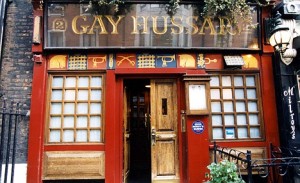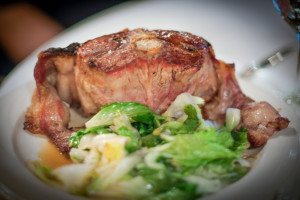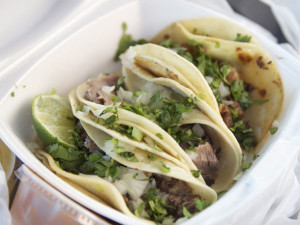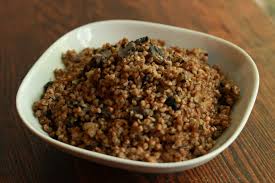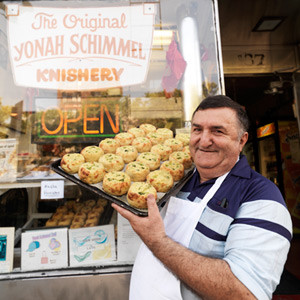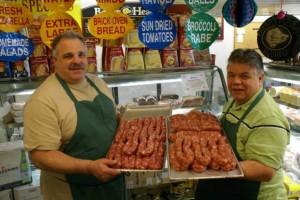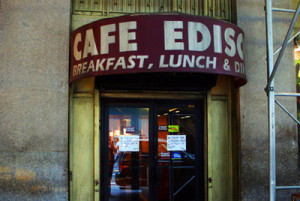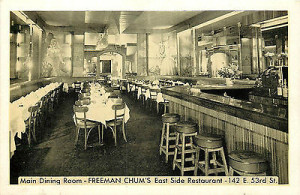In the early 1970’s, HG assisted the management of New York’s posh Hotel Pierre in solving a sticky public relations problem. The Pierre was part of the Forte international hotel group. This meant HG/BSK got a special rate when they stayed at Forte’s Brown’s Hotel in the Mayfair neighborhood of London. Brown’s was quiet and genteel. The rooms had no television or other of today’s electronic necessities. Furniture was vaguely art deco. Bathrooms were spacious with large tubs and powerful hot water showers. Comfy beds and sweet smelling sheets. The hotel’s chintz bedecked English Tea room was famous throughout London. HG/BSK breakfasted in their room. Poached eggs. Grilled tomatoes. Wheat toast. Marmalade. Pots of very good tea. Then off to a day of museums, galleries, shops and London architecture. Back to Brown’s for tea at four o’clock. Cucumber and watercress sandwiches. Scones with clotted cream and strawberry jam. Fruit cake. And, of course, superb freshly brewed tea. A brief rest and shower. Off to the theater. (The dollar and pound were in an attractive equilibrium in those days making London affordable). Apres theater HG/BSK dined at the glamorous Savoy Grill. Perfect smoked salmon sliced paper thin. Mixed grill with soufflé potatoes. Their other choice was venerable Rule’s for smoked salmon, Welsh rarebit and vintage Port. At some point, Brown’s got a big time “luxury” modernization. Prices went up and the rooms lost some of their charm. HG/BSK switched to the Wilbraham Hotel near Sloane Square. Eccentric, shabby, genteel, comfortable. HG/BSK eliminated high cal afternoon tea and lunched at such wonderful venues as the Hotel Connaught Restaurant (certainly in its time the best and most beautiful restaurant in the world) and J. Sheekey’s, the seafood restaurant in the theater district. HG’s spot for lunch on a grey, rainy or chilly London day was The Gay Hussar on Greek Street in Soho. A cozy rectangular room bedecked with books, mirrors and political caricatures, The Gay Hussar is the favorite dining venue for Britain’s Labor Party and left wing journalists. While the Labor Party dignitaries may attack the rich in Parliament, they do not disdain rich food. The Hungarian food at The Gay Hussar is decidedly rich, flavorful and hearty. The Wilbraham Hotel allowed HG/BSK to stock their refrigerator with ham, roast beef, chutney and salads from a nearby delicatessen (“By Special Appointment to the Queen Mother”). Thus, HG/BSK had their after theater feast in their room. Drank very good French wines. Yes, those were perfect London days and nights. Can’t be repeated. London is not the same. The unique English flavor of the city has diminished and money crazed internationalism rules.
Perfect London Days (and Nights)
February 25th, 2015 § 1 comment § permalink
Mutton Chops
February 24th, 2015 § 0 comments § permalink
If you are a happy carnivore with a taste for robust red meat, there is nothing better than a big, rare mutton chop. Oddly, it is not a celebrated menu item in New York or Paris. (If you search, you can find mutton chops in London). In times past you could find mutton chops at two locations in New York: Keens Chophouse on W. 30th Street and at Gage & Tollner on Downtown Brooklyn’s Fulton Street. Gage & Tollner was founded in 1878 (closed in the 1990’s) and had a mellow antique interior with 38 gas lamps, wood paneling and mahogany tables. The mutton chop was medium in size and served with corn fritters sweetened with a bit of maple syrup. (The combination seemed unusual but it worked). Thankfully, Keens is still in business and their legendary mutton chop is still giant. Prices however are a different story: In keeping with present day oligarchy-influenced New York the chop now fetches $51.00. HG/BSK enjoyed Keens often when they lived on the Upper West Side during the 1960’s.(Prices were much more modest then). Once, during a Boston-type blizzard, HG/BSK ventured out at night, found an intrepid cab, and supped on Keens’ mutton chop, skillet sized golden hash browns and wine. Only two tables in the restaurant were occupied. Keens (founded in 1885) was not only a cold weather choice. On a blazing July day, HG/BSK shopped for baby furniture at Macy’s (baby daughter Lesley was due in August). HG and very pregnant BSK left summer heat behind and had an early dinner of roast beef, fiery horseradish and Yorkshire Pudding at Keens. The beautifully aged restaurant interior was cooled by very modern air conditioners. HG/BSK felt they were dining in late autumn London. Keens now charges $58.00 for its prime rib.
Viva Mexico
February 23rd, 2015 § 0 comments § permalink
In the early days of television (1954) HG and a colleague recently arrived in New York from California, wrote TV news programs that were broadcast nationally. The news was illustrated with still photos (they were called “telops”) which were transmitted by telephone wire to the TV stations (news film was introduced at a later date). HG and his pal were swift and nimble news writers and photo selectors. It was fun. International News Service, the Hearst wire service (later absorbed by United Press) was HG’s employer. INS was housed in the Daily Mirror building on E. 45th Street and HG usually lunched in the hole-in-the-wall Greek diner off the building’s lobby. But, knowing that his California buddy missed Mexican food, HG invited him to lunch at Manhattan’s only Mexican restaurant, Xochitl. A mistake. “This is a bad joke,” he declared in reference to both the food and the high price of lunch. In the 1960’s HG/BSK visited friends in California (their first trip to the state) and were determined to eat “real” Mexican food. Their friends (not foodies) took them to a nearby Taco Bell (then only in California). HG/BSK found it satisfactory but felt there was something missing. HG thought about all of this at a Sopaipilla Factory dinner last night (the eatery is in Pojoaque, New Mexico, a few minutes from HG/BSK’s home). HG/BSK and their visiting eight-year-old grandson, Haru, feasted on menudo, enchiladas, green and red chile of a quality simply unimaginable to a New Yorker of the 1960s. Not so to present-day New Yorkers like grandson Haru, who knocked off a bunch of chicken tacos declaring them to be “awesome” with the caveat that, as a Brooklyn guy who regularly dines in Sunset Park (a Mexican neighborhood near his home), he has devoured many an authentic taco. In fact New York is having such a Mexican food renaissance (with both high end and low down options) that HG’s Californian pal would probably find much to smile about. As part of this renaissance, HG is looking forward to next month’s opening of Rosie’s, Restaurateur Daughter Victoria’s next New York restaurant. This will feature farm-to-table Mexican cooking. (Husband/chef Marc Meyer has just returned from a two-week visit in Mexico with Diane Kennedy, the ultimate authority on Mexican cuisine). Meanwhile, HG will be off to nearby El Parasol to give visiting Haru another taco fix.
The Evolution of Japanese Dining In New York
February 21st, 2015 § 3 comments § permalink
The first time HG ever dined in a Japanese restaurant was in 1958. The restaurant was Suehiro, a tiny room near Columbia University. It was one of two Japanese restaurants in New York (the other was in the East 20’s). There were no sushi or ramen eateries in this very cosmopolitan city. HG’s Suehiro meal consisted of miso soup (with some tiny cubes of tofu), beef sukiyaki cooked table side in an electric pan by a kimono clad waitperson. Sliced orange for dessert. A pot of hot green tea. The check was laughably small and the satisfaction was great. HG was hooked. Never tasted sushi until the 1960’s when the first sushi bar opened in the West 40’s. First taste didn’t impress. But, subsequent visits made HG a raw fish convert. Now, of course, New York has scores of Japanese restaurants specializing in everything from fried chicken to curry to traditional Japanese pub food. The choices for sushi and ramen are limitless — from small dive joints to $800 omakase feasts at one of the city’s most exclusive sushi emporiums. HG is bemused at the fact that Japanese restaurants now vastly outnumber Jewish delicatessens (there are less than ten) in Manhattan. HG/BSK delighted in the food they consumed in Tokyo and Osaka (HG/BSK were in Japan some ten years ago for the marriage of SJ and Exquisite Maiko). SJ and EM guided HG/BSK through the vast food markets in the two cities. There were visits to a delightful sake bar and stops for grilled chicken and pork, fried balls of chopped octopus and much more. Slurped a lot of memorable ramen. One of the benefits of having a Japanese daughter-in-law (besides her production with assistance of SJ of Haru and Teru, HG/BSK’s wonderful grandkids) is cuisine. EM is HG/BSK’s favorite cook. As HG has noted in many posts, EM produces the world’s best tempura, robust stews and soups and life enhancing seafood. Her meals at SJ/EM’s Brooklyn home or in the family Prince Edward Island ocean front paradise are among life’s most joyous occasions.
More Kasha Love
February 14th, 2015 § 2 comments § permalink
Kasha (also known as buckwheat groats) is one of HG’s favorite foods. HG is always puzzled why it’s so seldom on restaurant menus (except for the rapidly diminishing number of Jewish “dairy” restaurants) and is so rarely used in home cooking. Simple to make. The kasha grains are mixed with beaten egg and sautéed until dried. A few cups of chicken broth are added to the saucepan and the mix is cooked until the grains become soft (Warning: Never overcook into a mush). HG likes kasha topped with fried onions and mushrooms (accompanied by a bowl of sour cream and plenty of ground pepper and sea salt flakes). Great topped with fried chicken livers and onions. Kasha Varnishkes used to be a staple in traditional Jewish eateries. In these kosher (non dairy) restaurants the mix of kasha and butterfly (farfalle) pasta would get an exhilarating hit of crisp fried onions and a big dollop of chicken fat. A young HG would accompany this treat with plenty of cold vodka and beer at Moe Dubiner’s eponymous non-kosher restaurant (long closed) on New York’s Stanton Street. It was a big favorite of the Jewish gangsters and gamblers who came to the restaurant for a late night snack. Kasha is versatile. Great in a big bowl of steaming chicken broth. Excellent as a filling in traditional blintzes (an egg crepe topped with kasha, rolled and then fried gently) or knishes (a flaky stuffed pastry). Best of all as an accompaniment to slow roasted beef brisket. Obligatory is lots and lots of savory gravy.
The Knish
February 12th, 2015 § 0 comments § permalink
The Knish is an Eastern European street food introduced to the United States by turn of the century Jewish immigrants from Belorussia. The Knish is a flaky pastry filled with a variety of stuffings—potato, kasha (buckwheat groats), spinach, cheese. A famous name in knishes (and loan-sharking…but that is another story) is Yonah Schimmel. Yonah began selling knishes from a pushcart on New York’s Lower East Side in 1890. The Yonah Schimmel knish bakery has been at its present location on East Houston Street since 1910. (There seems to be a spelling confusion. The big sign on the store says “Yonah Shimmel” even though the correct spelling is “Schimmel.”) Another top knish baker (alas, departed) on the Lower East Side was a woman named Gussie Schwebel who ran an eponymous knishery near Schimmel’s on Houston Street. Gussie was a flamboyant self promoter with a flair for publicity. In 1942, she wrote a letter to First Lady Eleanor Roosevelt in which she volunteered to bake knishes for our brave soldiers overseas. The suggested pastries would provide needed nourishment. She followed that up with another letter offering to deliver a sampling of hot knishes to the Roosevelt town house on E. 65th Street. Mrs. Roosevelt accepted the offer and the Jewish Daily Forward newspaper ran a front page story headlined: “Mrs. Roosevelt To Taste Jewish Knishes.” When delivery day arrived the Roosevelt home was surrounded by reporters, cameramen and a curious crowd. Canny Gussie Schwebel (or her press agent) had tipped off the newspapers. Mrs. Roosevelt, who didn’t enjoy being the target of press agentry, refused the knishes. Thus, the U.S. military had to fight World War Two without the benefit of nourishing knishes. (The information about Gussie Schwebel and Eleanor Roosevelt is from Laura Silver’s invaluable,researched book: “Knish: In Search of the Jewish Soul Food”. Published by Brandeis. The link is http.// www. knish.me).The knish, long only found in New York City, is making a modest comeback. Knish bakeries have opened in Los Angeles and a few other cities. Zabar’s (on New York’s Upper West Side) bakes knishes and sells them online. Gabila’s (located in Copiague, L.I.) is a mass producer of knishes who claim to have sold over a billion. HG has never fancied knishes. HG was spoiled by his Mom’s incomparable cheese (potato or kasha) blintzes served from a hot frying pan placed on the dining room trivet. Accompanied by a big bowl of rich sour cream. Ah!!!
The Great Italian Sausages Of New York & New Jersey
January 31st, 2015 § 0 comments § permalink
HG must make an admission: Despite the best wife in the world, glorious weather, stirring natural vistas, a beautiful home, interesting neighbors, history, art, culture and an abundance of smoky, lush green chiles HG’s life is incomplete. Why? The great New York/New Jersey Italian fennel sausage is unobtainable in the Land of Enchantment. Yes, Whole Foods, Trader Joe’s, Kaune’s and every supermarket display and purvey “Italian” sausages. “Italian” ? They are as Italian as Mitt Romney. They should be labeled “Mormon” sausages. They lack the fennel seeds and other time honored ingredients that make the New York Italian sausage so juicy, flavorful and memorable. During the opening scenes of the film, “Godfather II”, that wonderful actor/director/playwright/teacher Mike Gazzo (playing Frankie Pietangeli) laments the absence of sausage and peppers in Nevada. Frankie’s woe echoes HG’s. What HG has is memories. Sausage, peppers and onions served on good bread, dispensed from the back of a truck in Greenwich Village. The same dish bought from a cart on Lexington Avenue, eaten while racing to a business appointment. Sausage and peppers at the San Gennaro Festival in Manhattan (years ago when the the Festival was smaller and food was better) and at traditional festivals in the Mott Haven section of The Bronx. Sausage and peppers at old time, cheap restaurants in the Belmont section of The Bronx and in Little Italy (before it became a tourist travesty). There were Italian restaurants in northern New Jersey that made an epic of the dish. Jerry’s in East Rutherford (tragically, closed after many decades of operation) did it best. This is how The New York Times described it in 1998: “Jerry’s combines garlicky, crisp and juicy Chicken Scarpariello (chunks of chicken on the bone) with great fruity rounds of pepper (both hot and sweet), fried onions, crunchy Red Bliss potatoes, and plenty of Jerry’s fennel-scented sausage.” Yes, this expanded plain spoken “sausage and peppers” into a regal feast. This was an enormous platter of food. HG/BSK would dig in, drink a lot of modest Chianti and manage to finish about 60%. Appetizer? Dessert? Fuhgeddabout it !!!
Death Knell For Haimish Manhattan
November 10th, 2014 § 0 comments § permalink
So sad. The Cafe Edison, affectionately known as “The Polish Tearoom,” is closing its doors. The landlord (the Hotel Edison on 47th Street and Broadway in New York) is replacing it with a fancy restaurant headed by a “big name chef.” Another haimish New York restaurant bites the dust. Haimish is a Yiddish word meaning many things: Down home. With family and friends. Warm, cozy, plain and unadorned. Like eating an overstuffed sandwich at the kitchen table with Mom, Pop, your wife and the kids. Cafe Edison was decidedly Jewish with matzo ball soup, kasha varnishkes, pastrami and all the other Jewish/ Eastern European staples. Theater folks of every ethnicity gathered there daily to eat, shmooze, make deals, exchange show biz chatter. There were other theater district restaurants, not Jewish, that were haimish. Delsomma (Italian) and Fornos (Spanish). Both gone. In fact, the Jewish-Irish-Italian Manhattan where HG spent many years has vanished. The Irish bars with their corned beef and cabbage, pig’s knuckles and hard boiled eggs belong to yesterday. Italian red sauce joints are no more. The Torissi guys (Italian Specialties, Parm, Carbone, Dirty French) have upscaled Italian food ($52 veal chops, for example). Thankfully, Manhattan’s African-American and Latino population is keeping the haimish tradition alive. You can still get splendid fried chicken and catfish in Harlem. Mofongo remains on the menu in Puerto Rican eateries. Cubans in Washington Heights are still dishing up Cubanos, moros and cristianos and other good things. But, if haimish is your thing get on the subway (and ferry) and head to the boroughs. Forget Manhattan. HG, to paraphrase the song, will take The Bronx, Queens, Brooklyn and Staten Island, too.
Thanks For the Memories
November 3rd, 2014 § 0 comments § permalink
In 1954 HG partnered with a Broadway press agent and opened HG’s first public relations office in an odd little four story building, 236 W. 56th Street, on New York’s west side between Seventh and Eighth Avenues. The other tenants, like HG, were impecunious and vaguely connected with show business. The ground floor and part of the second was occupied by Patsy’s Italian Restaurant, celebrated for being one of Frank Sinatra’s favorite dining spots. It was a delightful old school restaurant featuring robust Neapolitan dishes. Though only ten years old at the time (it was founded in 1944 by Pasquale “Patsy” Scognamillo), it felt as if it had been there for decades. Prices were modest, affordable for even hand-to-mouth HG. The hosts were welcoming, generous people. They must have known that HG was struggling in his PR career because they always gave HG exuberant portions and coffee plus wine on the house. HG’s partnership dissolved. HG’s fortunes improved. HG moved to more appropriate offices on Madison Avenue. Nevertheless, HG continued to patronize Patsy’s, relishing its mozzarella in carozzo, clams arrreganata, chicken contadina and giant veal chops. Gradually, HG shifted his patronage to two other fine Italian restaurants — Delsomma on W. 47th Street and Paul & Jimmy’s on Irving Place (both long closed). While restaurants came and went, Patsy’s rolled along. It’s now in its 70th year and still owned by the Scognamillo family (It has only had three chefs in its history—all Scognamillos). Recently, HG checked the Patsy’s website. Food prices, of course, are much loftier than in the past. But, what gained HG’s attention was the wine list. Very few bottles priced less than $50 and many priced between $175 and $1,500. Yes, HG knows that New York has been taken over by the oligarchs, but still…. HG mused that New York is like an old girl friend. Cherish the memory but don’t arrange a reunion.
Freeman Chum
October 30th, 2014 § 0 comments § permalink
In the early 1950’s HG combined his career as a journalist with Broadway press agentry. HG had a part time (three months a year) girl friend, a showgirl at the Copacabana night cub. The young woman liked change. She worked five months of the year in Las Vegas, four months in Paris and the rest of the time at the Copa. When in New York, she lived in a hotel around the corner from Freeman Chum, a Chinese restaurant on Manhattan’s E. 53rd Street and that’s where she and HG drank martinis and nibbled egg rolls and spare ribs before her show. Much taller than HG, she would pat HG on the head and call him, in her inimitable Cockney drawl, “my little ducks.” When not in scanty show biz attire, she favored dowdy, tweedy English countrywoman clothes. Her ambition was to retire in the English countryside and raise beagles. Back to Freeman Chum. Odd for a Chinese restaurant, the martinis were superb, prepared by barman Hoy Wong. HG later learned that Marilyn Monroe came in every Wednesday and had a two martini liquid lunch prepared by Wong. Joe DiMaggio, the great Yankee star, would come to Freeman Chum on Saturday nights, recalled Wong, and spend secluded hours drinking scotch. (Surprisingly, he and Monroe never met there). Judy Garland was another customer and discreet Wong noted she had many drinks. Wong left Freeman Chum in 1963 and became the barman at the Blue Bar in the Algonquin Hotel. Two of his favorite customers were scotch drinkers John Lennon and Henry Kissinger. (Sometimes, this oddly matched duo shared a cocktail table). Wong had a lengthy career. He was still active at the Blue Bar when he was in his 90s. The Algonquin honored Wong on his 90th birthday (when he was there oldest barman in New York) with a cocktail party in the hotel’s Oak Room. Scores of customers were in attendance. Wong was never befuddled by odd drink requests. He said the Duke of Windsor ordered a “House of Lords martini in and out on toast.” A waiter was about to summon the kitchen. Wong stopped him. He knew the Duke wanted a gin martini with lemon peel. The lemon peel was to be burnt with a match before going into the glass. Wong said the Duke liked his version so much he ordered another.
